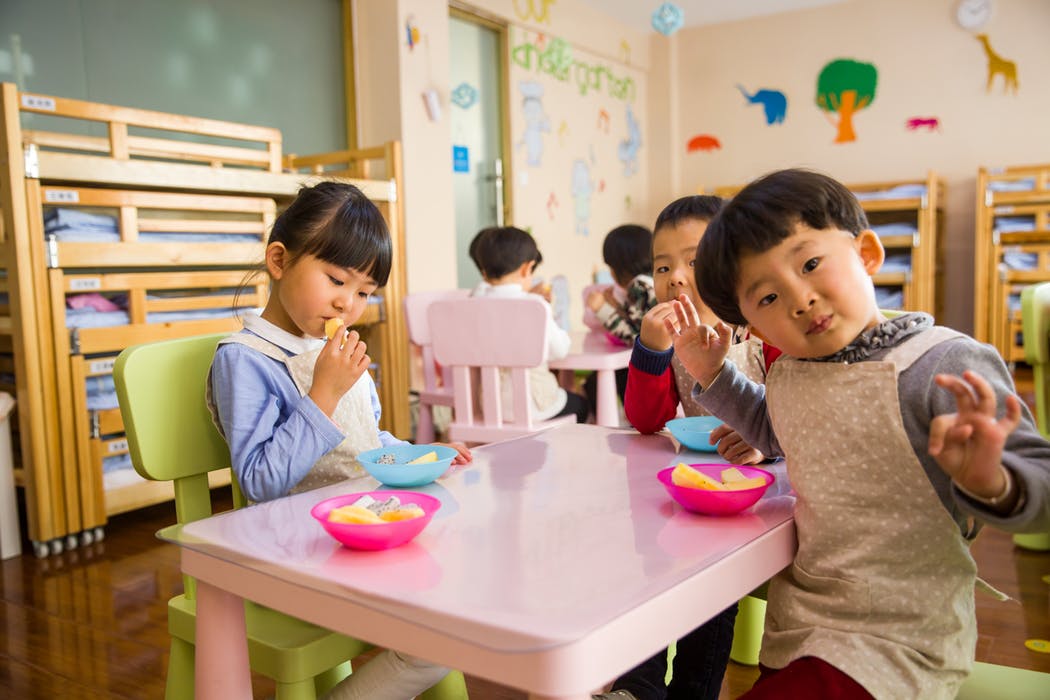Are you looking for strategies to teach students appropriate mealtime manners? If so, keep reading.
1. Praise the student for demonstrating appropriate mealtime behaviors: (a) give the student a concrete reward (e.g., privileges such as leading the line, handing out learning materials, 10 minutes of free time, etc.) or (b) give the student an informal reward (e.g., praise, handshake, smile, etc.).
2. Converse with the student to explain (a) what he/she is doing wrong (e.g., eating with their fingers) and (b) what they must be doing (e.g., using a fork or other utensil).
3. Praise those students who demonstrate appropriate mealtime behaviors.
4. Praise the student for demonstrating appropriate mealtime behaviors based on the duration of time the student can be successful. As the student shows success, slowly increase the duration of time required for reinforcement.
5. Draft an agreement with the student stipulating what behavior is required (e.g., having appropriate mealtime behaviors or disposing of his/her food in the trash can) and which reinforcement will be implemented when the agreement has been met.
6. Connect with parents to disseminate information about the student’s progress. The parents may reinforce the student at home for demonstrating appropriate mealtime behaviors at school.
7. Assess the appropriateness of the task to ascertain (a) if the task is too easy, (b) if the task is too complicated, and (c) if the duration of time scheduled to finish the task is sufficient.
8. Select a peer to model appropriate mealtime behaviors for the student.
9. Get the student to question any instructions, expectations, or directions they do not understand.
10. Give the student a list of clearly defined mealtime behavioral expectations (e.g., rules for the cafeteria serving line, sitting at tables, remaining seated, use of utensils, disposing of trash, etc.).
11. Praise other students for demonstrating appropriate mealtime behaviors.
12. Assess the appropriateness of the student eating with a group of peers. If appropriate, have the student eat with one peer and slowly increase the size of the group as the student experiences success.
13. Train the student in the appropriate use of eating utensils in both simulation and actual eating situations.
14. Train the student in appropriate mealtime conversation (e.g., topics to discuss, asking conversational questions, speaking quietly, etc.).
13 Ways to Teach Learners Appropriate Mealtime Manners
Are you looking for ways to teach students appropriate mealtime manners? If so, keep reading.
1. Train the student in appropriate mealtime etiquette (e.g., speaking with an empty mouth, eating with mouth closed, chewing quietly, etc.).
2. Train the student in selecting an appropriate amount of food, eating an appropriate amount of food, taking properly sized bites, etc.
3. Train the student in appropriate cleanup learning activities upon the conclusion of eating (e.g., disposing of trash, putting trays and tableware in appropriate places, washing hands, etc.).
4. Train the student in the appropriate use of napkins (e.g., keep on lap, wipe mouth, clean up spills, etc.).
5. Train the student in appropriate line behavior (e.g., waiting quietly, refraining from physical contact, moving with the line, etc.).
6. Make sure the student sits properly while eating (e.g., sits near the table, sits upright, leans forward, etc.).
7. Train the student in appropriate behavior when finishing a meal early (e.g., making conversation, remaining in their seat, excusing themselves, etc.).
8. Train the student in appropriate ways to get seconds or additional food (e.g., asking for seconds, going through the cafeteria line a second time, purchasing seconds, etc.).
9. Take the student away from eating with their peers if they cannot demonstrate appropriate mealtime behaviors.
10. Teach the student appropriate ways to drink liquids (e.g., opening milk cartons and juice containers, using a straw, pouring into a glass, drinking from a glass, etc.).
11. Teach the student appropriate ways to respond to food they do not want (e.g., sample everything at least once, leave the food on the plate, offer extra portions to others, etc.).
12. Train the student in appropriate ways to clean up spills (e.g., ask for assistance, use paper towels and napkins, etc.).
13. Train the student inappropriate ways to clean clothing when accidents happen during mealtime (e.g., immediately go to the restroom, use paper towels and napkins, etc.).





